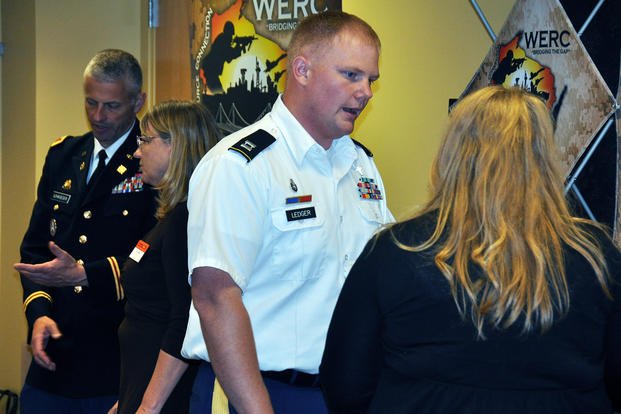WASHINGTON -- Hiring military reservists and veterans is a positive investment for America, the deputy director of U.S. Army Reserve Command told federal hiring officials yesterday.
Reservists and veterans have a "vast resource of capabilities" that provides a distinct hiring pool for federal civilian jobs, Army Maj. Gen. Jon J. Miller said at the Veterans Employment Symposium, held here by the departments of Defense, Veterans Affairs, Labor and Homeland Security, and the Office of Personnel Management. The purpose of the symposium was to help federal hiring officials improve practices for hiring veterans.
Miller highlighted the Employer Partnership of the Armed Forces, which the Defense Department created last year to help separating service members, veterans and reservists find jobs.
"Not only can job seekers find positions they are looking for, but employers can also reach in and find the quality candidates they need," Miller said.
The general said it makes sense to hire veterans and reservists, since the military has spent so much effort to grow them into leaders. "And not just leaders in the field, while in uniform," he said. "We've taught them to be leaders in whatever they do."
The Army Reserve has adopted the idea of transitioning soldiers from active duty to reserve duty, while keeping the door open to shift between statuses until the soldier retires, Miller said. "Although we want them to continue to serve in America's army in uniform, we are nonetheless doubly gratified when they answer another call to public service," he said.
Service members are trained in a wide spectrum of disciplines, Miller said, including health care, transportation, logistics, public safety, engineering, construction and many others.
Navy Vice Adm. Kevin McCoy, commander of Naval Sea Systems Command, told symposium participants about the command's focus on hiring wounded warriors. The command began its efforts two years ago, hiring 84 wounded warriors in fiscal 2009. Last year, the command hired 283 wounded warriors, and it has hired 337 so far this year, he said.
McCoy has called hiring wounded warriors "a moral imperative." On July 22, he signed an agreement, along with Gen. Ann Dunwoody, commander of U.S. Army Materiel Command, to partner in hiring veterans with service-connected disability ratings of 30% or more.
"It is not about what we can do for them, but what they can contribute to making our missions successful for the warfighter," he said. "These wounded warriors will be able to translate their battlefield experience into our work, which is supporting the warfighter -- a job they know well."
Existing civilian hiring procedures do not connect wounded warriors to jobs, McCoy said, and it is not enough to pull from a list of qualified names. Rather, he said, hiring officials "have to be where warfighters are, rather than waiting for them to come to you."
Find the Right Veteran Job
Whether you want to polish your resume, find veteran job fairs in your area or connect with employers looking to hire veterans, Military.com can help. Subscribe to Military.com to have job postings, guides and advice, and more delivered directly to your inbox.











